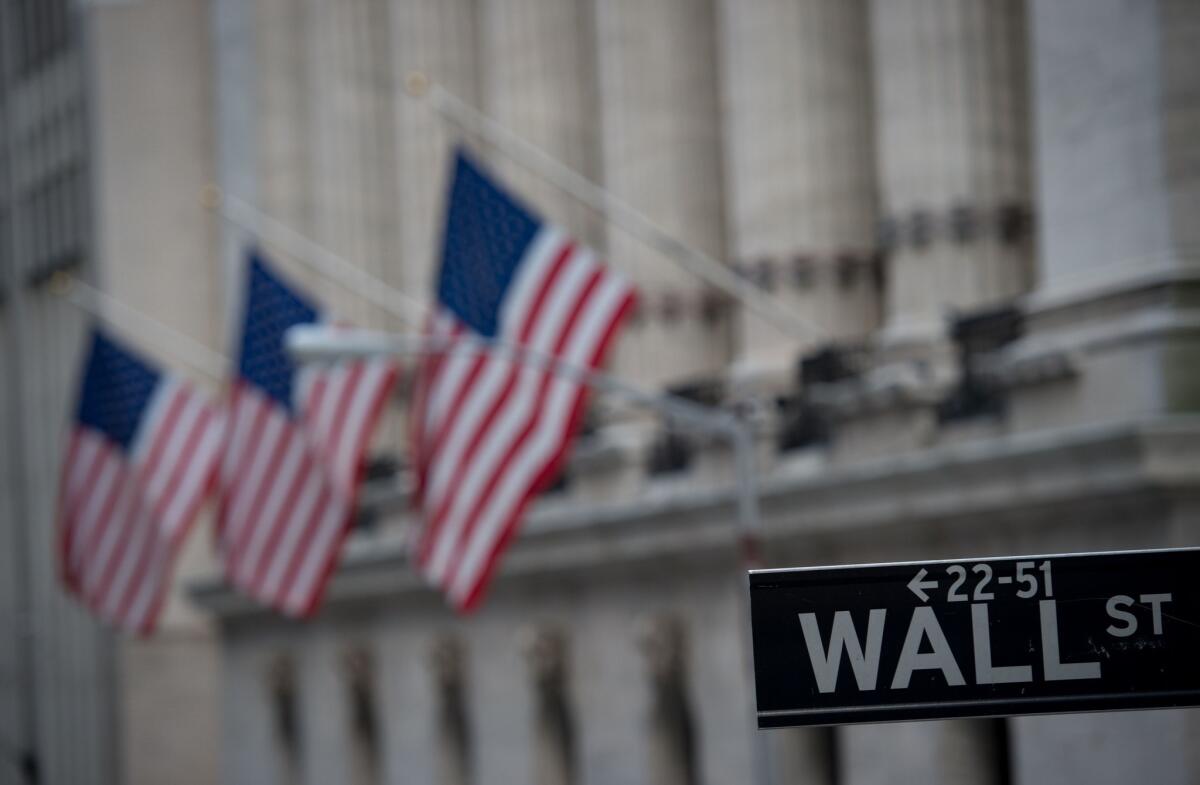In another late reversal, Wall Street rallies to end higher

- Share via
Wall Street rallied back from a sharp morning drop on Thursday, led by a resurgence for some of the year’s most beaten-down stocks.
The S&P 500 climbed 1.2% in another scattershot day of trading, with many stocks flipping from the bottom of the leaderboard to the top following a few sharp reversals in momentum. Treasury yields sank in a sign of increased pessimism.
It’s the latest wobble for Wall Street, which has been wavering for weeks as it digests gargantuan moves the market made earlier this year, first down more than 30% on worries about the coming recession and then up more than 30% on hopes for a relatively quick rebound.
Trading has been particularly erratic this week, as investors rethink bets that the reopening of economies around the world will allow for a relatively quick return of growth. Another possible flare-up in tensions between the world’s largest economies is also hitting markets, with comments from President Trump about China further weighing on them Thursday.
The S&P 500 rose 32.50 to 2,852.20 after rallying back from an early-morning loss of 1.9%. The Dow Jones industrial average rose 377.37, or 1.6%, to 23,625.34 after earlier being down 458 points. The Nasdaq composite gained 80.56, or 0.9%, to 8,943.72 after erasing its earlier loss of 1.8%.
Thursday’s turnaround was powered in large part by a rally for stocks that have been pummeled for much of this year: banks.
Financial stocks in the S&P 500 jumped 2.6% for the biggest gain among the 11 sectors that make up the index. Wells Fargo rose 6.8%, and Bank of America added 4%. Through much of this year, investors have sold bank stocks on worries that low interest rates and the severe recession will mean less profit for making loans.
Energy stocks, another corner of the market that’s been hit hard this year by recession worries, also climbed. They benefited from a rise in the price of oil after the International Energy Agency gave a new forecast for oil demand this quarter that wasn’t quite as bad as its earlier one.
Before the recession hit, U.S. stocks quickly lost just over a third of their value as investors anticipated an avalanche of layoffs hitting the economy. Those fears have turned out to be true, and a report on Thursday showed that nearly 3 million U.S. workers filed for unemployment benefits. That brings the total to roughly 36 million in the two months since the pandemic caused widespread orders for people to stay at home and businesses to shut down.
But stocks began climbing in late March after massive amounts of aid promised by the Federal Reserve and Capitol Hill convinced markets that the worst-case scenario of a financial crisis wouldn’t be happening.
Many professional investors have warned the rally was overdone, though, given how much uncertainty exists about how long the recession will last. On Wednesday, Federal Reserve Chairman Jerome H. Powell warned this could become a prolonged downturn, while the top infections diseases expert in the U.S. said Tuesday that reopening the economy too quickly could backfire and lead to more deaths.
Recently, worries about renewed U.S.-China tensions have also weighed on markets. A bruising trade war between the two had dragged on the global economy before the pandemic hit.
“I have a very good relationship” with China’s leader, Xi Jinping, Trump said in an interview with Fox Business Network, “but I just — right now, I don’t want to speak with him. I don’t want to speak with him.”
Trump also said the government is considering barring Chinese stocks trading on U.S. exchanges unless they follow U.S. accounting rules.
“We have all the challenges internally with the economy being shut down, but us getting into a conflict with China adds an additional dimension of uncertainty,” said Mark Hackett, chief of investment research at Nationwide.
The yield on the 10-year Treasury fell to 0.62% from 0.64% late Wednesday. It tends to fall when investors are downgrading their expectations for the economy and inflation.
More to Read
Inside the business of entertainment
The Wide Shot brings you news, analysis and insights on everything from streaming wars to production — and what it all means for the future.
You may occasionally receive promotional content from the Los Angeles Times.








